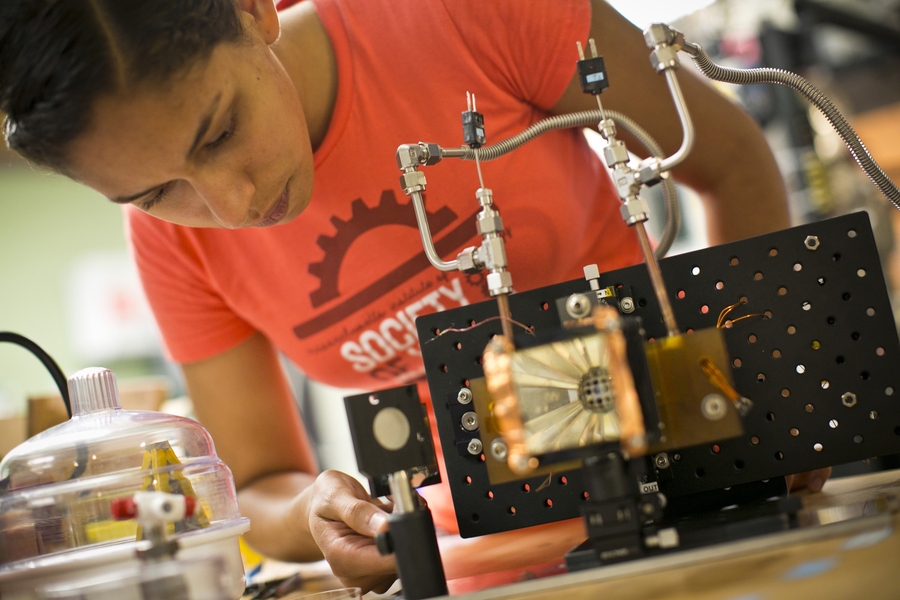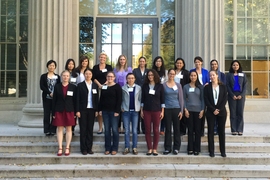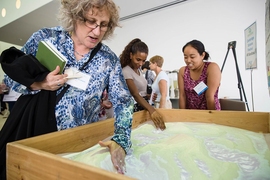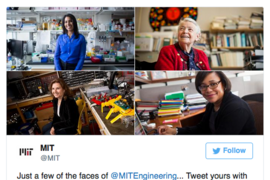MIT and Johnson & Johnson — a global leader in medical devices, pharmaceuticals, and consumer goods — have announced a new collaboration designed to increase the number of undergraduate women enrolling in science, technology, engineering, and math (STEM) programs and graduating with STEM degrees. This new effort will build on MIT’s ongoing work to expand the reach and quality of STEM education and attract more women to fields traditionally dominated by men.
MIT is one of nine academic institutions that will be working with Johnson & Johnson in the coming months to develop effective recruitment, engagement, and retention strategies for women leaders in STEM. The other participating institutions are Caltech, Harvey Mudd College, Instituto Tecnológico de Aeronáutica (ITA – Brazil), Rhode Island School of Design, Rutgers Honors College, Spelman College, the University of Tokyo, and the University of Limerick.
“Since 2006, MIT has experienced a 78 percent increase in undergraduate female engineering majors. The uptick is especially significant in electrical engineering and computer science and mechanical engineering,” said Chancellor Cynthia Barnhart. “We are making progress but have more to do, particularly in some of the science disciplines. This new collaboration with Johnson & Johnson will give us additional resources to provide targeted support to the next generation of women STEM leaders. And I know that these young women have the power to help us change the world for the better.”
In addition to concentrating on college and university talent, Johnson & Johnson’s STEM strategies are focused on other life stages, including enhancing K-12 curriculum, program-based learning, and mentoring, as well as developing the best professional practices to attract and retain top technical female talent to its organization.
“The fact is that diversification of the STEM graduate pool and workforce is not proceeding at a pace we’re satisfied with,” said Kathy Wengel, worldwide vice president of the Johnson & Johnson Supply Chain. “Johnson & Johnson was founded on science and innovation, and we’re committed to being a partner and advocate for women. So we are very enthusiastic about working with esteemed organizations and institutions like MIT, to expand the idea base in STEM2D fields and fostering diversified perspectives across the world.”
MIT’s new collaboration with Johnson & Johnson complements existing work that aims to expand the reach of STEM education. Examples of these efforts include:
- On Sept. 4, 2015, MIT President L. Rafael Reif and U.S. Congressmen Joe Kennedy III (D-Mass.) hosted "Scaling STEM," an event focused on how to use technology to improve access to quality STEM education for all students. The event, held at the MIT Media Lab, featured demonstrations of new learning tools and outreach efforts, presentations by leading education experts, and a panel discussion.
- MIT’s Office of Digital Learning (ODL) and the Woodrow Wilson National Fellowship Foundation are collaborating on ways to support schools and teachers in their efforts to use emerging digital learning tools, environments, and curricula, especially in the areas of STEM. A new MIT PK12 project is filling a growing need in education by giving teachers new capabilities to transform their classrooms into the technology-enhanced learning environments of tomorrow.
- MIT’s Teaching and Learning Laboratory (TLL) created 47 STEM Concept Videos in order to assist students with applying the concepts they learn in introductory STEM courses to real-world challenges.











